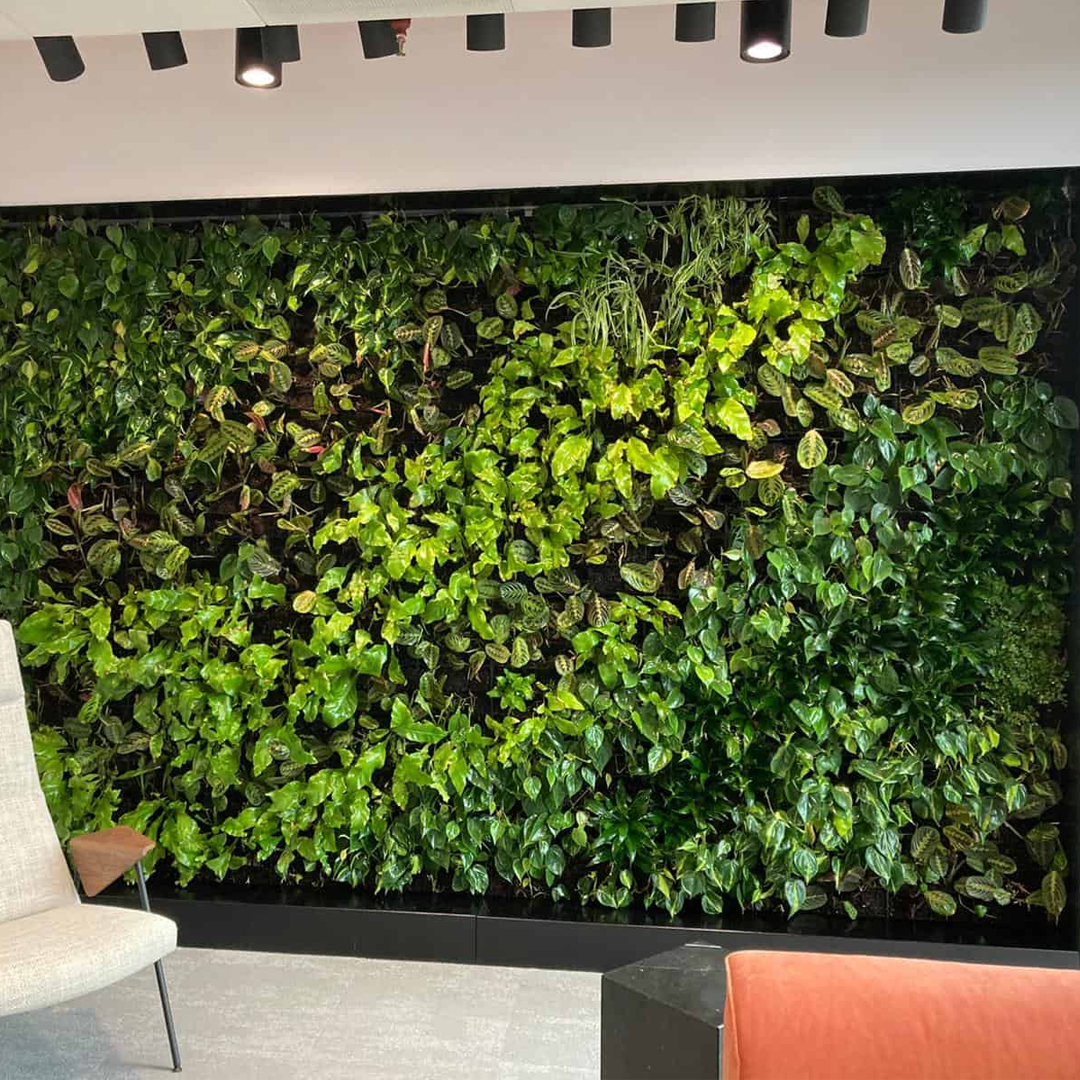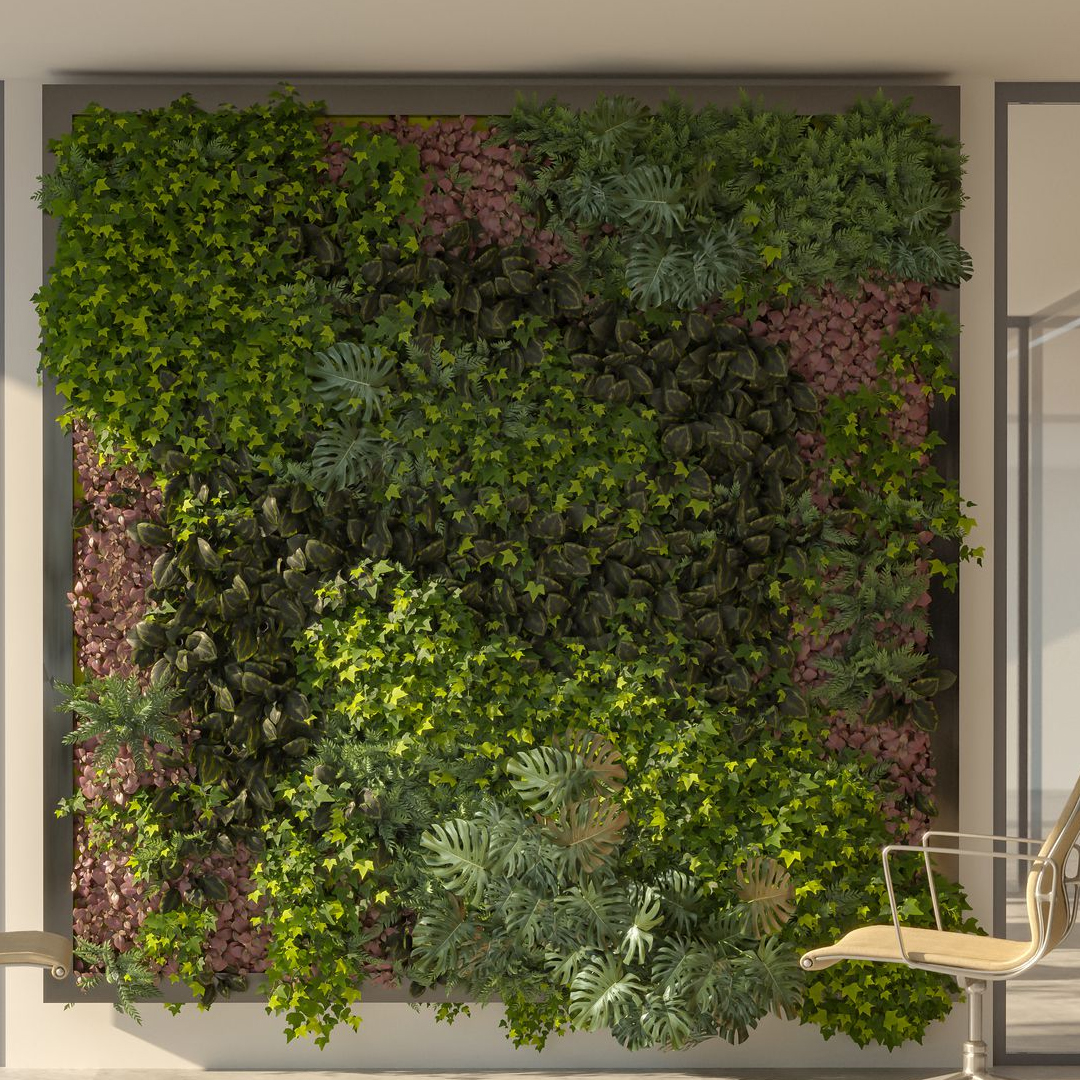A green wall, also known as a living wall or vertical garden, is a structure covered in vegetation, often plants, that grows vertically against a wall or a vertical surface. It's an innovative way to introduce greenery into urban spaces, both indoors and outdoors, where traditional gardens might not be feasible.
Components of a Green Wall:
-
Structural Support: A sturdy framework or structure that supports the weight of the plants and their growth medium (soil, felt, or other materials).
-
Growing Medium: The material in which the plants grow, providing nutrients, support, and moisture retention.
-
Irrigation System: A watering system that supplies water to the plants. This can range from a simple drip irrigation system to more complex automated setups.
-
Plants: Various types of plants can be used in green walls, including foliage plants, ferns, succulents, and even herbs or vegetables depending on the location and purpose of the wall.
Benefits of Green Walls:
-
Improved Air Quality: Plants help to filter pollutants and improve air quality.
-
Aesthetic Appeal: They add a natural and visually appealing element to indoor and outdoor spaces.
-
Sound Insulation: Green walls can reduce noise levels, especially in urban environments.
-
Thermal Regulation: They can help regulate indoor temperatures by providing insulation against heat and cold.
Types of Green Walls:
-
Interior Green Walls: Installed indoors, typically in offices, homes, or public buildings, to improve aesthetics and indoor air quality.
-
Exterior Green Walls: These are installed on the exterior of buildings, offering similar benefits while also contributing to building insulation and reducing heat absorption.
Green Wall Services In Palwal | Haryana | India
Green Wall Service Provider In Palwal | Haryana
Green Wall Service On Rental In Rajasthan | India





